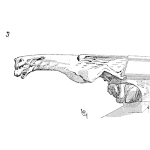
We use a sample to estimate a parameter from a population. Sometimes the sample just doesn’t have the ability to discern a change when it actually occurs.
In hypothesis testing, we establish a null and alternative hypothesis. We are setting up an experiment to determine if there is sufficient evidence that a process has changed in some way. The Type II Error, $-\beta-$ is a measure of the probability of not concluding the alternative hypothesis is true when in reality it is true.
The power, $-1-\beta-$, reflects the ability of the sample to correctly lead us to the conclusion that an actual change has occurred when in reality it actually has. [Read more…]













